Piadina or piada, pieda, pida or piè, depending on the local dialect, is an Italian flatbread made from wheat flour that is a typical food of the Romagna area (my home region!) and the upper part of the Marche region, in particular in the Italian provinces of Ravenna, Forlì-Cesena, Rimini, Pesaro and Urbino, including San Marino, which is a small country separate from Italy but within its borders.
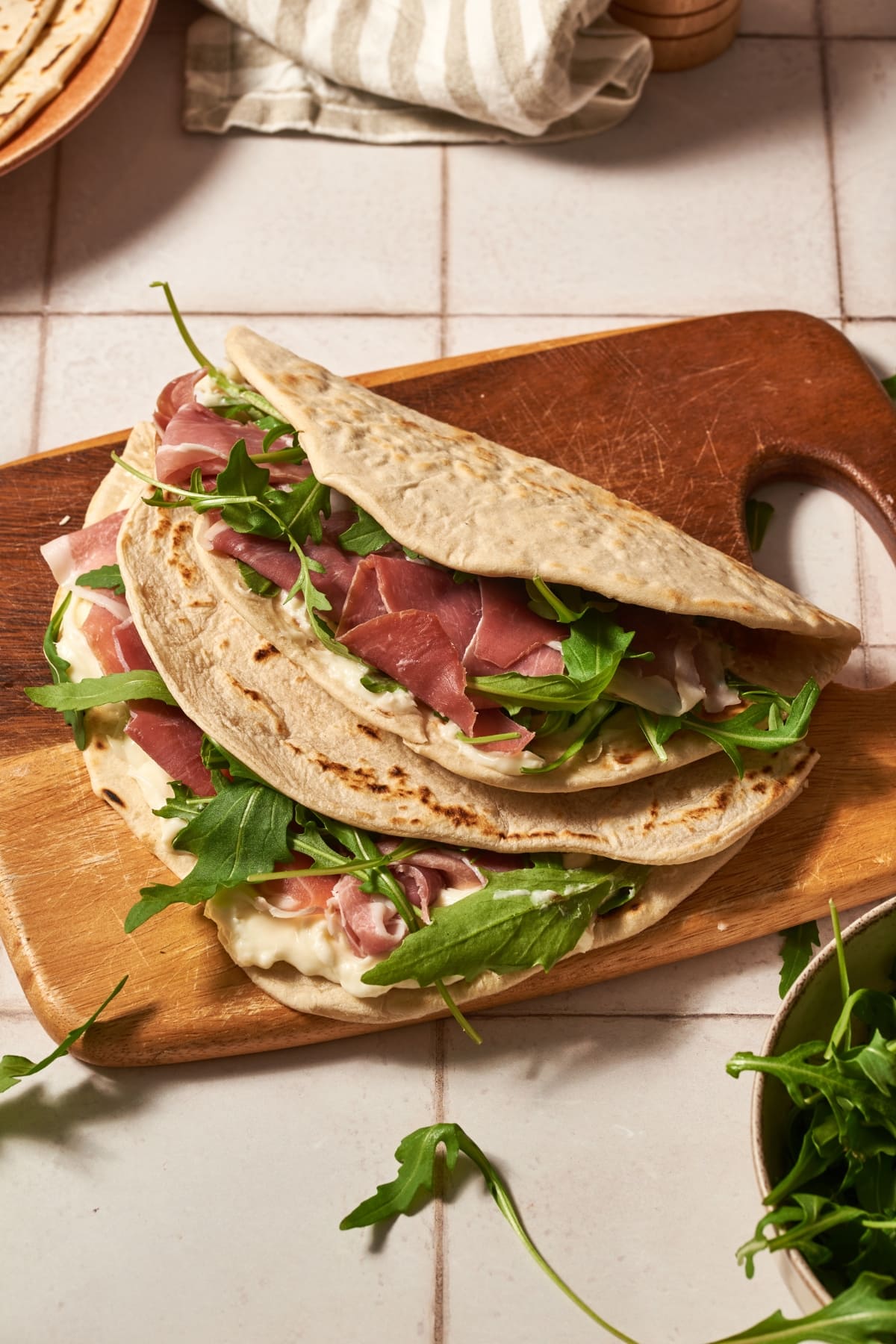
A piadina looks like a large flour tortilla. It is a thin, flattened, circular flatbread that is eaten in slices or stuffed with wonderful local delicacies such as cold-cut meats, cheeses, vegetables, or for a sweet treat with jam, honey or spreadable chocolate like Nutella.
The piadina is made and then stuffed right away and served hot. If you are starting with a store bought pre-made piadina, it is usually filled and then heated by grilling it in a cast iron skillet or pressing it like in a panini press.
Not sure what to make tonight for dinner? How about making this delicious Italian flatbread recipe and filling your piadina with your favorite Italian cold cuts and cheeses. I love the combination of arugula, squacquerone cheese and prosciutto, or mozzarella slices with tomatoes and basil. You are sure to get inspiration while reading all about piadina flatbreads.
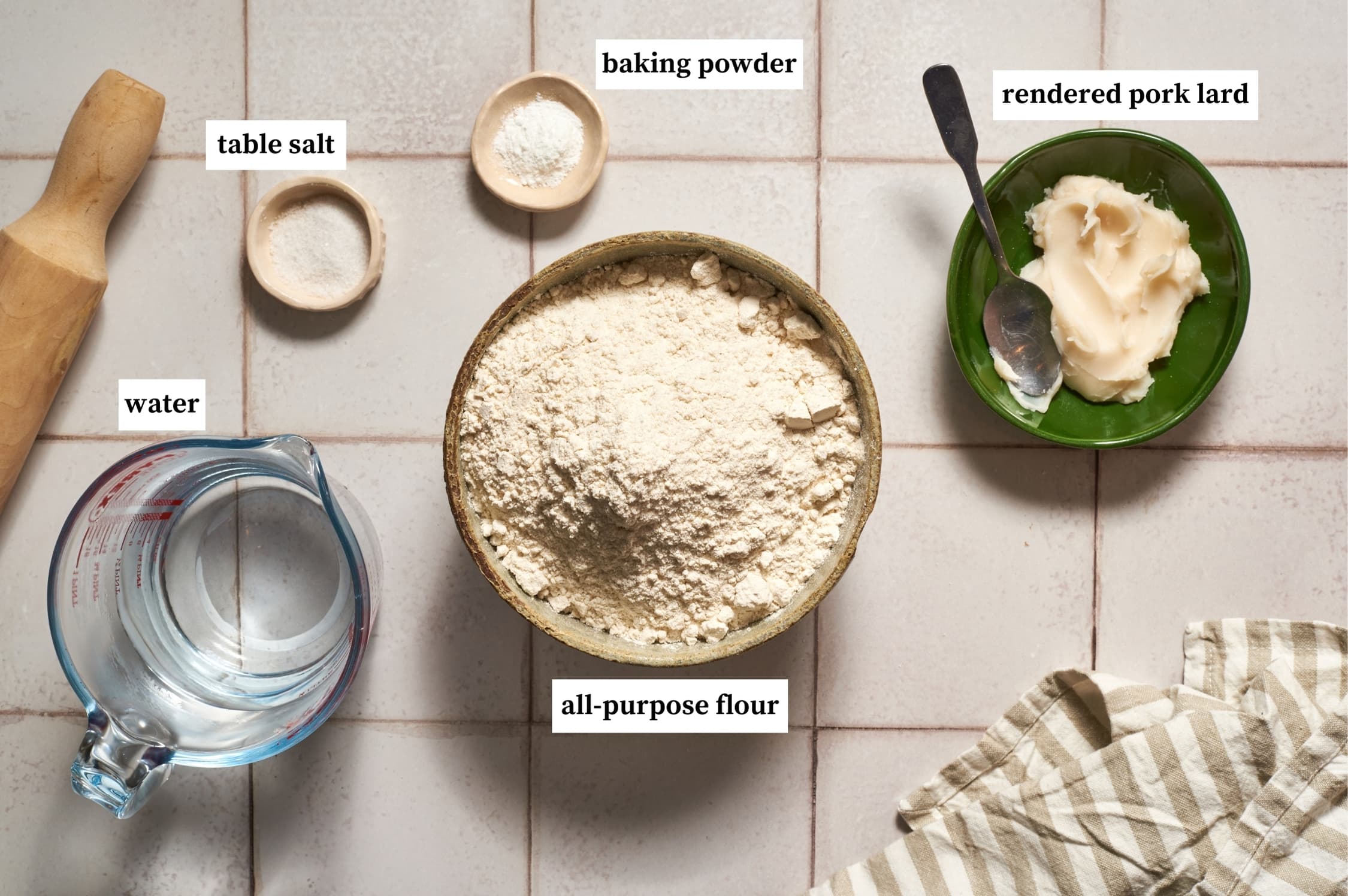
Make the dough: start by putting all the flour onto a flat surface, making a well in the center (photo 1). In a small bowl, mix together the baking powder and salt. Pour the salt, baking powder, and then rendered pork lard (or olive oil) and warm water into the center of the well and start mixing it into the flour with a fork (photo 2). Next knead the dough with your hands for about 10 minutes until quite smooth, uniform, and soft but not sticky (if it’s still sticky, add more flour).
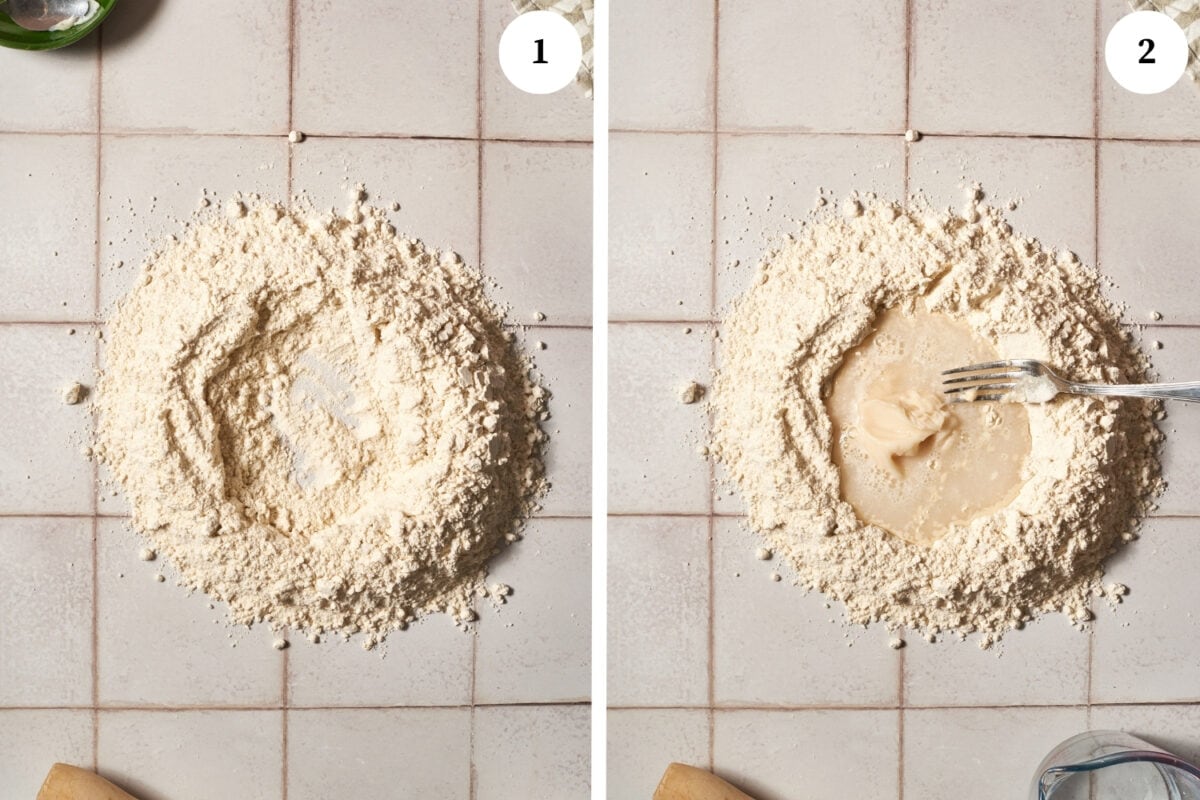
Let the dough ball rest: make the dough into a ball and cover it with cling film (photo 4). Let it rest at least 30 minutes at room temperature (if the dough is being prepared more than 1 hour in advance, you can keep it in the fridge and, when needed, remove one hour before using it).
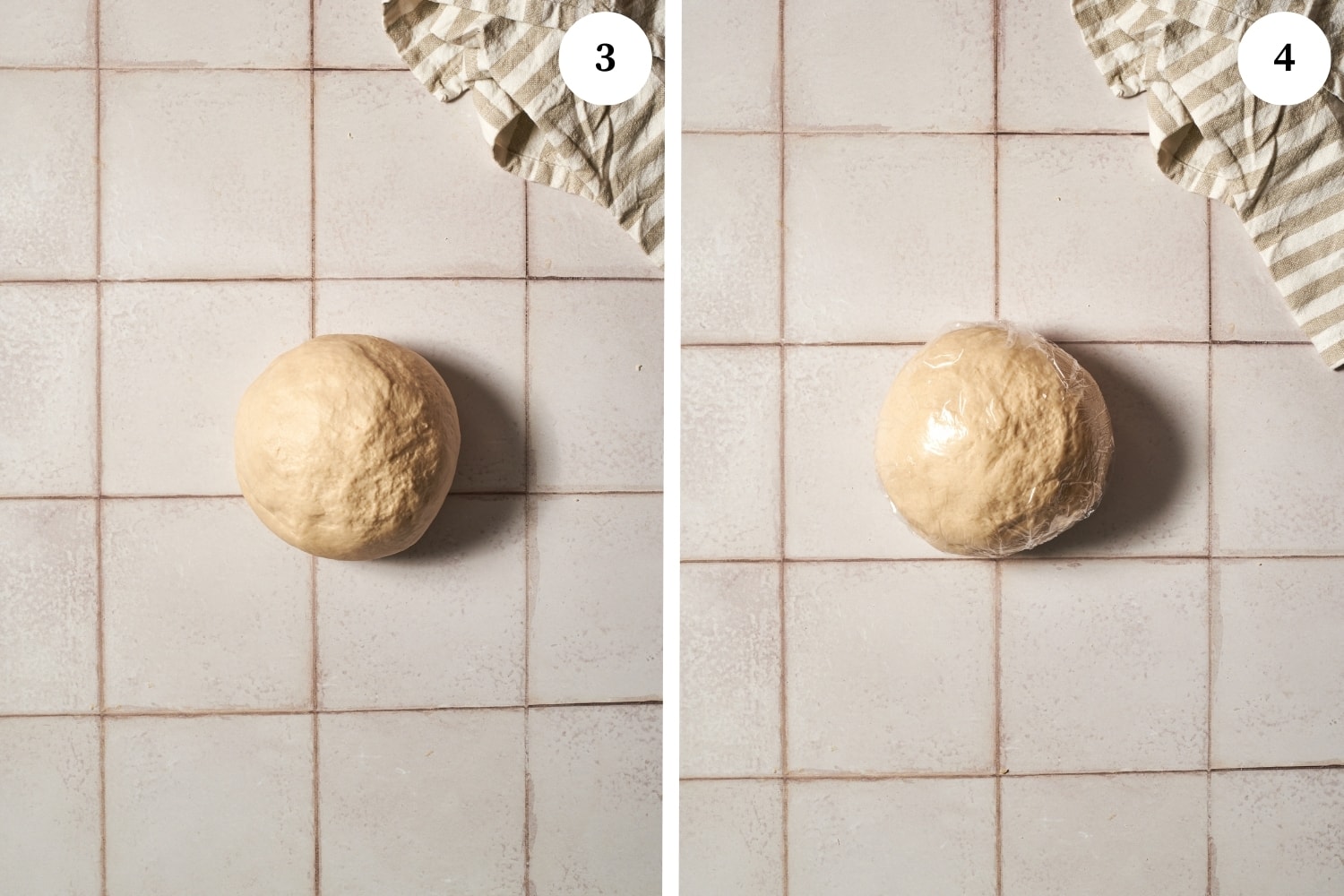
Prepping and cooking each Italian flatbread: heat a large nonstick pan on medium heat. Divide dough into about 5 smaller balls (about 140-150 grams per ball). On a flat surface, use a rolling pin to roll out the dough into a large circle until it reaches the desired thickness (ideally about ⅙ inch) (photo 5). Once the pan is hot, add a circle of dough, pricking it all over with a fork to avoid air bubbles (photo 6). Cook for about 1-2 minutes for a thin piadina, 2-3 minutes for a thicker one, or however long it takes for brown spots to form on the bottom. Then flip the piadina and cook for about the same time on the other side.
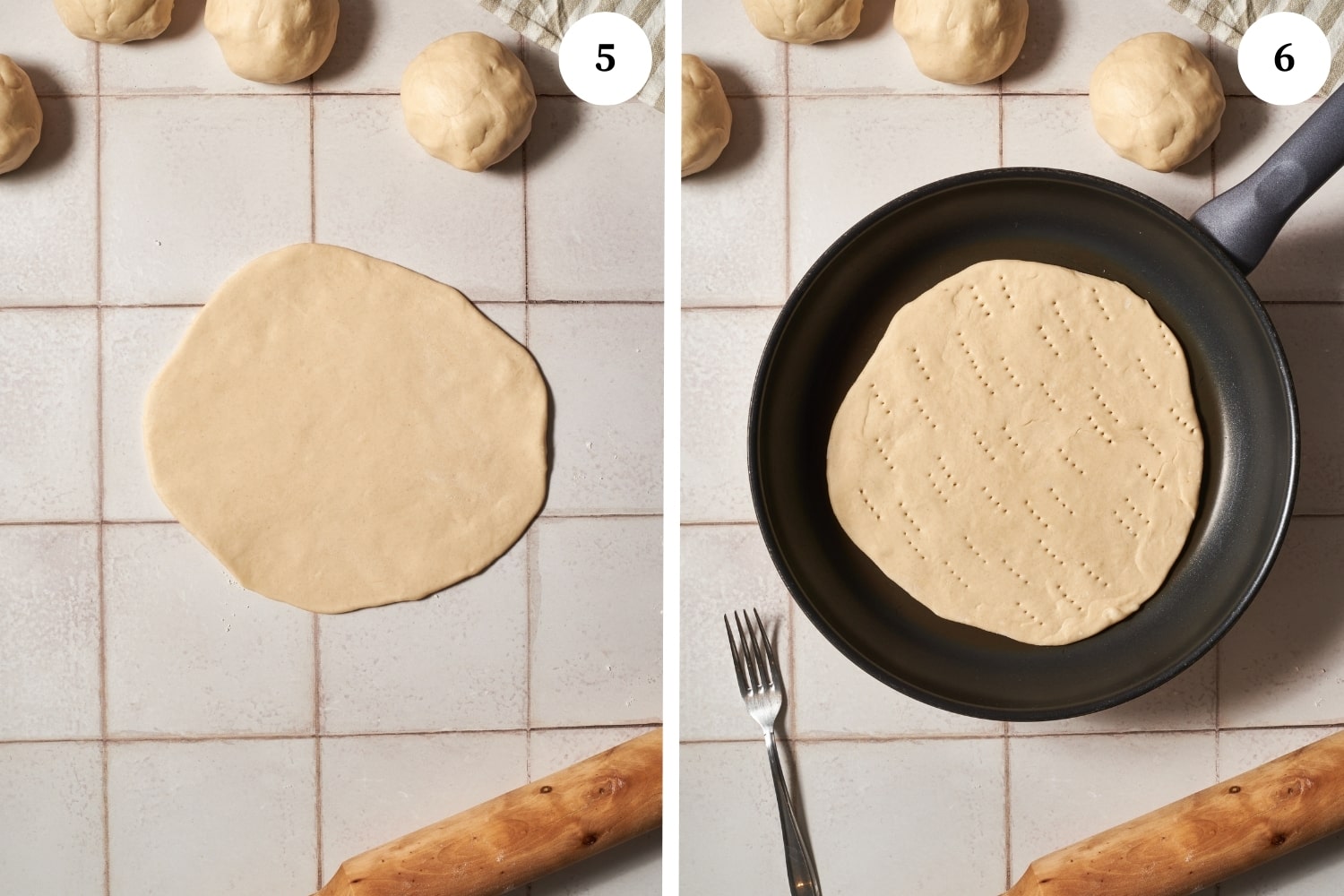
The finishing touches and filling: Remember that a piadina should be served hot, so it’s recommended to have your fillings ready (see fillings section). Once cooked, you can serve the piadina immediately by placing your desired fillings on one side of the circle and then folding it into a half moon, or by cutting the piadina into triangles to use like pieces of bread (photo 8).
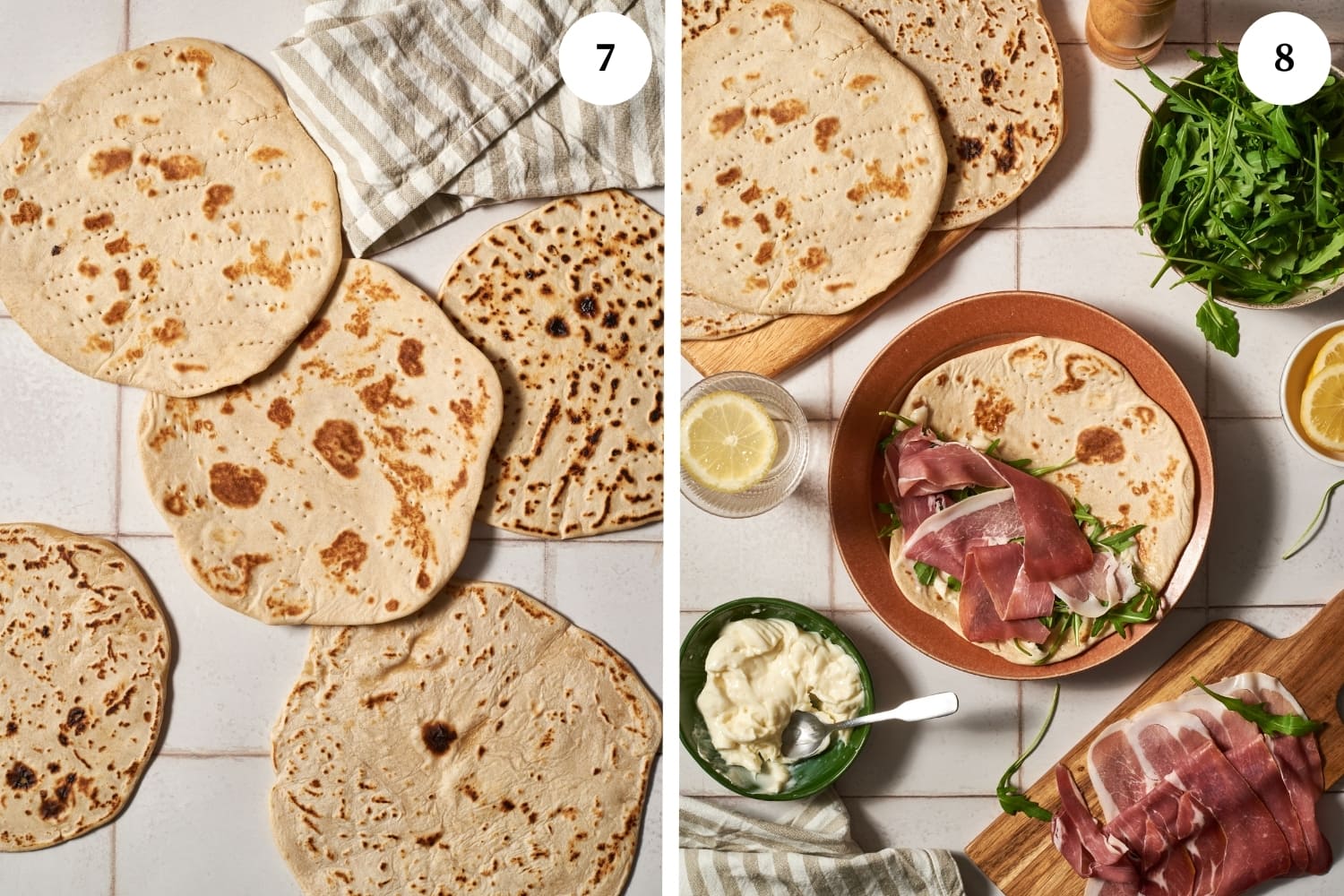
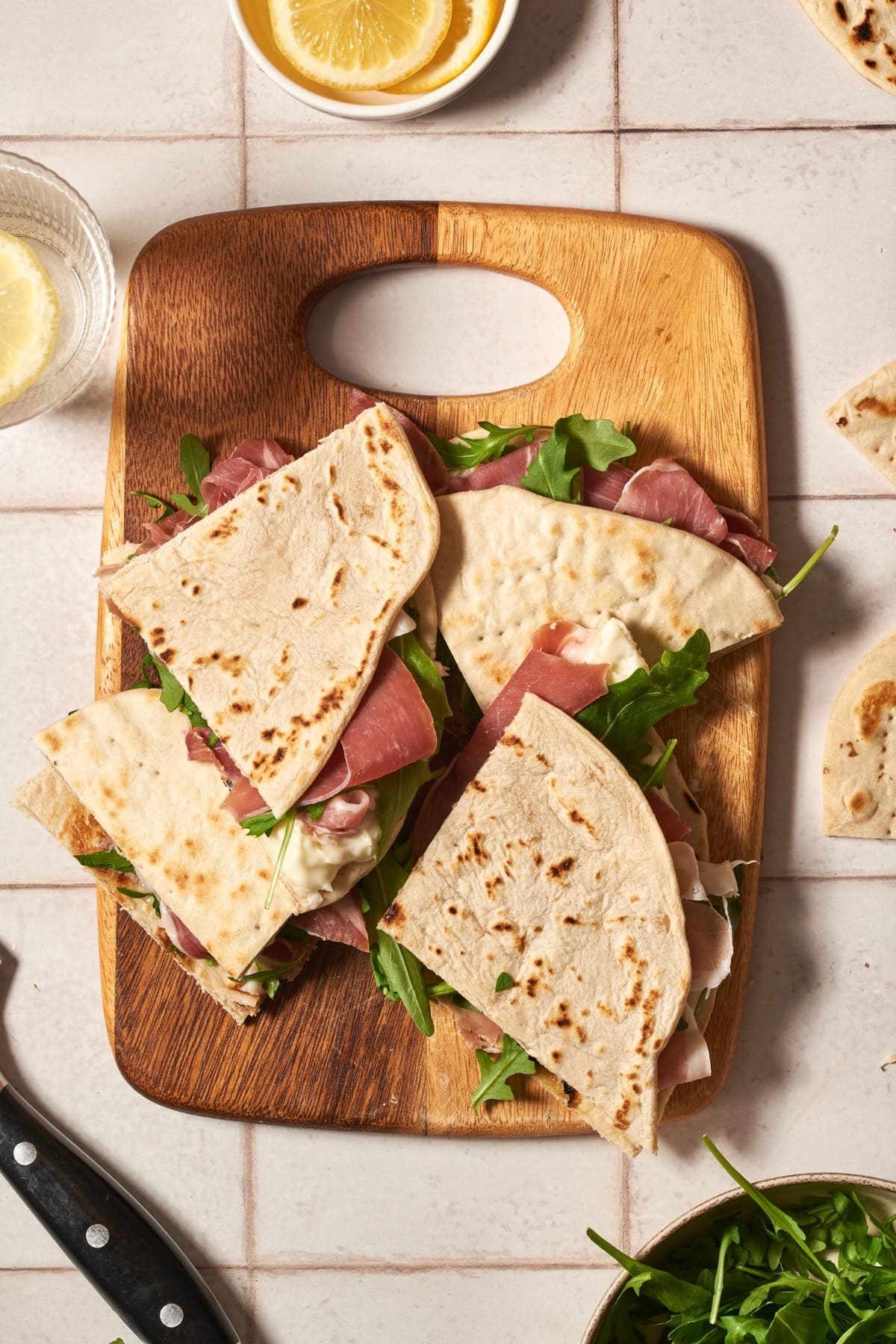
Piadina Romagnola has very ancient origins. It comes from a poor and simple peasant tradition, but over the years it has gotten a more gourmet reputation and achieved worldwide fame.
Currently, the piadina is registered in the list of traditional Italian agri-food products (PAT) of the Emilia-Romagna region. In 2003, some associations for the promotion and protection of the Romagna piadina requested PGI certification for the two variants of this product:
The differences between the two piadina variants are the size: traditionally, the piadina prepared along the coast (in the area between Riccione and Rimini) is thinner and wider than that consumed inland (e.g. in the Cesena and Forlì area). Another difference is that the piadina in the Pesaro area is often prepared as a puffed version, which is even tastier because it is fluffy and made strictly with lard.
The cooked piadina can be stored for one day, but be aware that they get hard very quickly. You will need to properly reheat them before using again, and be sure to serve them warm. An alternative method is to store the uncooked dough balls for up to 2 days in the fridge wrapped in cling wrap and then take a ball out, roll it out and cook it on the spot.
Absolutely. It can keep for months in the freezer, simply store it wrapped with oven paper or in a plastic bag. To re-heat, place it on a skillet for a few minutes until it’s soft again.
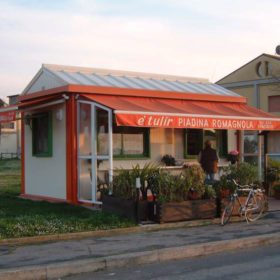
Piadina is the quintessential street food of Romagna. In fact, you can’t travel through Romagna without noticing the famous and characteristic chioschi, or kiosk in English, which are small shacks like the one pictured above, where piadine are made and sold mostly by women called piadinare.
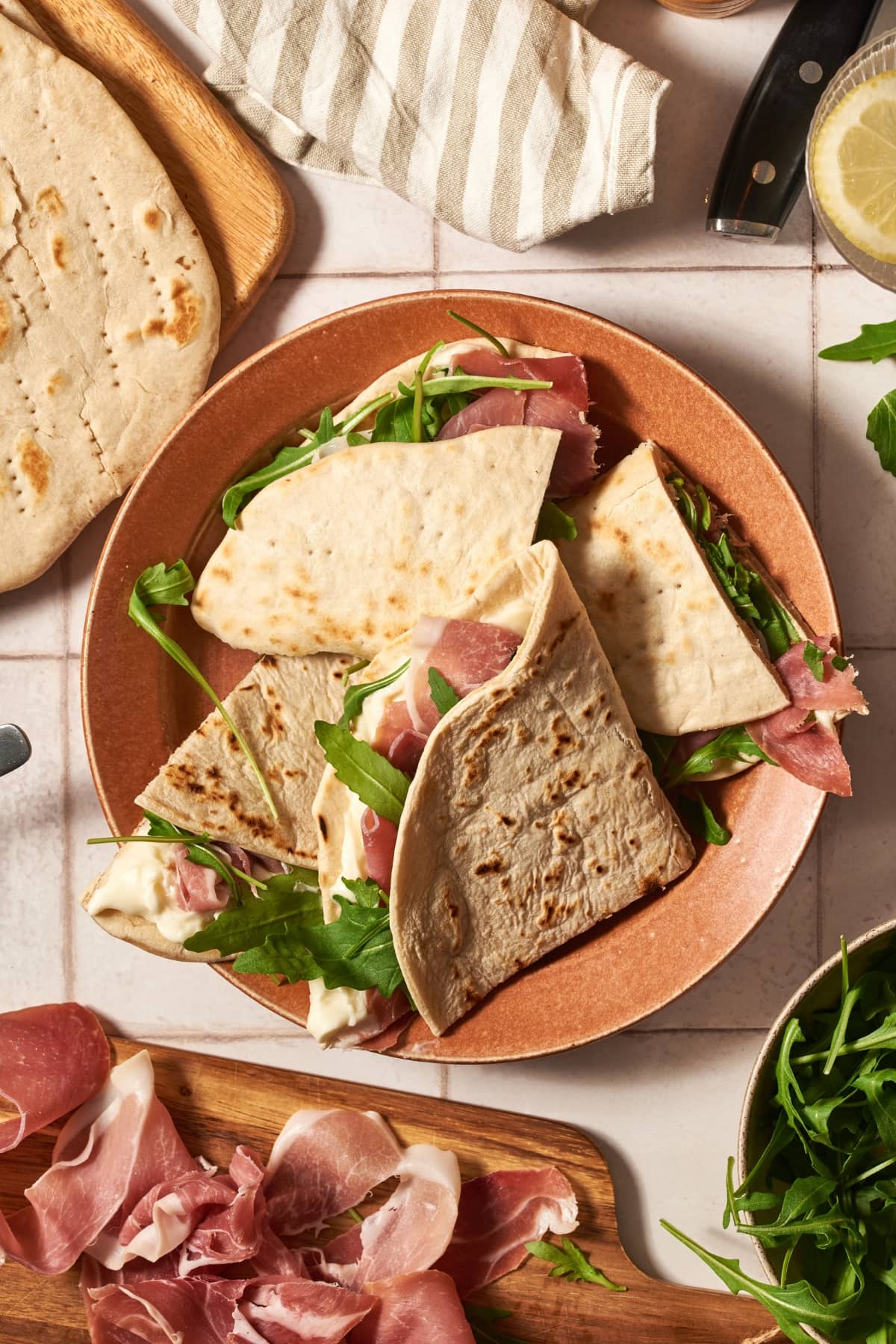
Try other traditional Italian recipes:
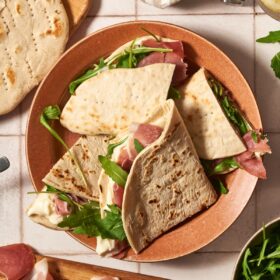
The Italian tradition is to eat piadina filled with salumi (cured meats) like salami, but you can also use prosciutto, coppa, or something similar. It is also very common to serve piadina with a very soft, young cheese traditionally from Romagna, called stracchino, which is spread on the surface of the piadina and served with arugula on top. Other combinations include mozzarella cheese, fresh sliced tomatoes, extra virgin olive oil and oregano or fresh basil. Una bontà!
If you’ve tried the traditionally cooked savory fillings and are ready for a change, why not try a sweet piadina? You can fill it with spreadable chocolate, any type of jam or jelly, or even honey and a sprinkling of cinnamon with a nice glass of milk to go with it.
Also very common in Romagna are the crescioni, or cassoni. This is similar to a calzone, but made with piadina dough. The most common fillings are spinach, sausage and onion, pumpkin and potato, mozzarella cheese and tomato, Nutella (which I love) and many others.
The first to cook a rudimentary version of the piadina recipe were the Etruscans, who were the pioneers in the cultivation and processing of cereals and therefore in the production of sfarinate, which closely resembles the modern-day piadina. Both are prepared without yeast and cooked on a metal or stone hotplate.
Sfarinate, the rudimentary piade, continued to be produced in ancient Rome, where they represented food for the rich, because they had to be eaten freshly cooked. Already after a few hours, in fact, the piadina Italian flatbread became too hard to chew. Therefore, they were not suitable for peasants who, on the other hand, needed food that could be stored for long periods of time without spoiling.
In the Middle Ages, there was an inversion of roles, so to speak. All the leavened bread products became the domain of the rich, which meant the simple piadina, produced without yeast and with less valuable flours such as barley, became the food of the poor.
Because of its relative simplicity, as cooking schools were born and gastronomy became a real art, the piadina was considered peasant food for the masses. The poor often resorted to adding acorns and dried legumes to the dough to make it as nourishing and satiating as possible.
During the twentieth century, the piadina flatbread experienced a period of resurgence, initially appearing on all the tables in Romagna before spreading to the rest of Italy and the world. Its true fame came when it became a street food, prepared and cooked to order in kiosks along the Adriatic coast, gaining international fame as early as the 1950s thanks to the many tourists who visited the area’s beautiful beaches.